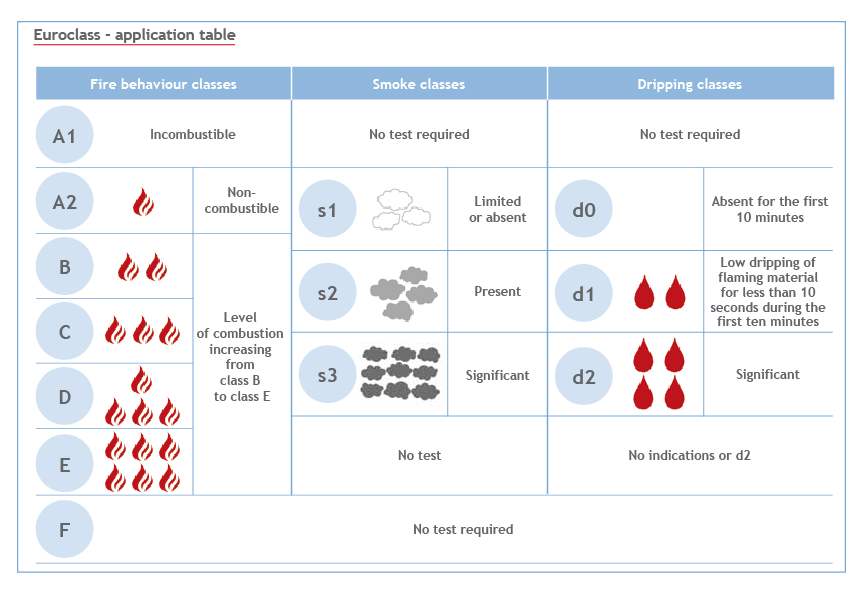2020/02 The top in fire prevention
The technical literature defines a fire as “a fast exothermic chemical reaction of a combustible substance, which entails heat generation, flames, smoke and gas development”. In order for a fire to develop there needs to be the simultaneous presence of combustible material, an ignition source and sufficient activating energy; whilst the conditions to stop a fire are: fuel exhaustion, flame extinction, and loss of heat. At the start of a fire an external ignition source is usually the cause of the reaction but once the combustible material starts to burn the heat generated internally can sometimes feed a very rapid and self-sustaining exothermic process.
In terms of safety, smoke is often more dangerous to people’s health than the fire itself. This is the reason why modern fire standards usually classify materials according to both their flammability and their smoke development. Union Foam, with their product lines Eurobatex and Eurobatex Glastec, provide the highest safety levels in class in terms of Reaction to Fire for their FEF products used for the thermal insulation of commercial, industrial, institutional and domestic services.
Nowadays Specifiers are increasingly required to have a deeper knowledge of fire safety standards. It is often necessary to make a thorough evaluation of the way a particular product or fire protection system works; which can be difficult since sometimes they actually work in different ways to each other in a real fire and to the comparative results they achieved when tested in laboratory conditions.
The fire performance characteristics of construction products, including thermal insulation materials can be modified in a number of ways to improve the ignition resistance, flame spread and heat release properties of any combustible ingredients, a key way of doing this, in an effective passive manner, with FEF products, is to incorporate endothermic fillers. A major benefit of this approach is a reduced tendency to propagate fire to adjacent combustible materials.
On 1st July 2013 the European Regulation for Building Materials CPR 305/2011 became effective and compulsory. It replaced the previous Directive 89/106/CEE, harmonising the standards regulating the sale of building materials in to the market, so as to guarantee specific safety properties, particularly with regards to fire risks. With the CPR the fire classification system of building materials, introduced by the EU Members the Directive 89/106/CEE, became fully operational.
Building materials manufacturers are obliged to have their products tested and approved, thus receiving the CE mark and a “Euroclass” classification. The Euroclass ranks the products according for Reaction to Fire from A1 to F, smoke development from s1 to s3 and dripping from d0 to d2, as shown in the table below.

The parameters which determine fire and smoke classification come from complex equations. We can simplify by stating that the Reaction to Fire class is strongly influenced by the speed at which the combustion develops as well as the time necessary for the initial ignition to occur and by the quantity of heat released by the combustible material. In terms of smoke classification, the main factors are the speed of smoke development and the total quantity of smoke released throughout the duration of the test.
Union Foam’s products Eurobatex, fully meets general market requirements with the following guaranteed performance characteristics: BL-s2,d0 for tubes and B-s3,d0 for sheets. In case of more demanding requirements, Union Foam offer Eurobatex Glastec, a product which can achieve the highest level of fire performance amongst FEF insulation products: BL-s1,d0 for tubes and B-s2,d0 for sheets.

